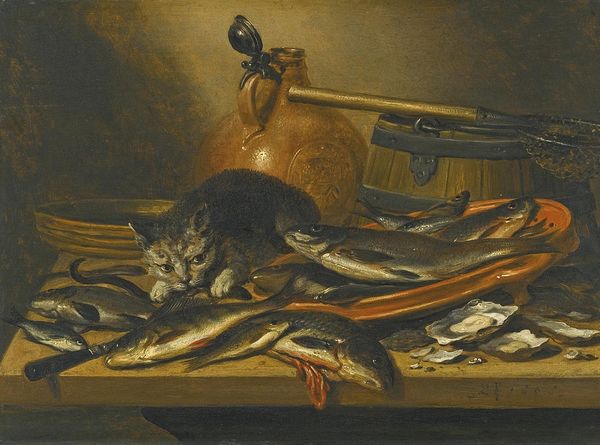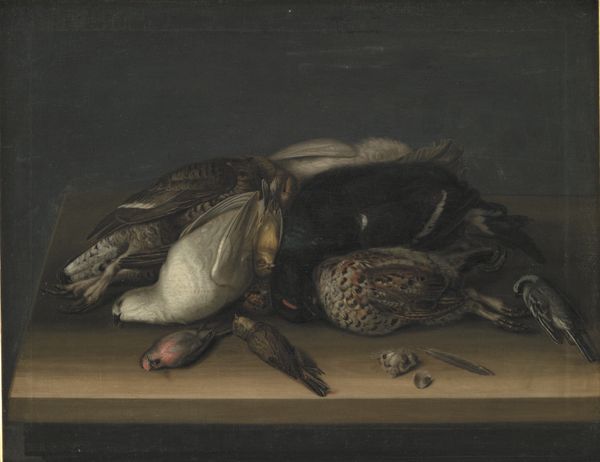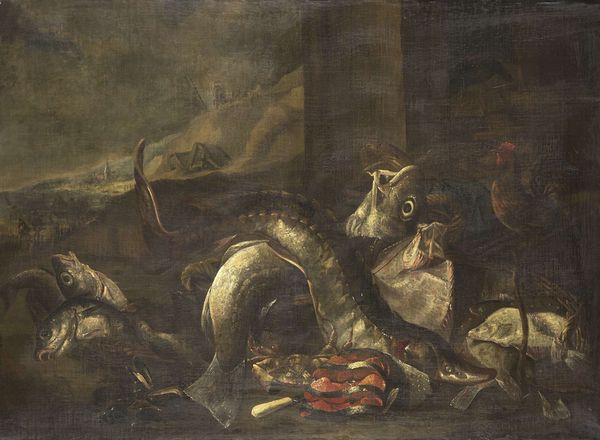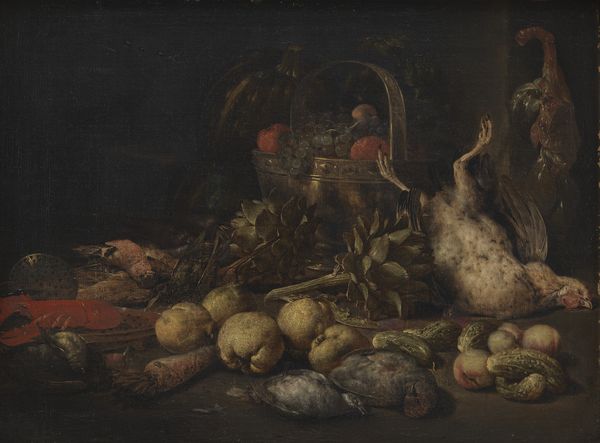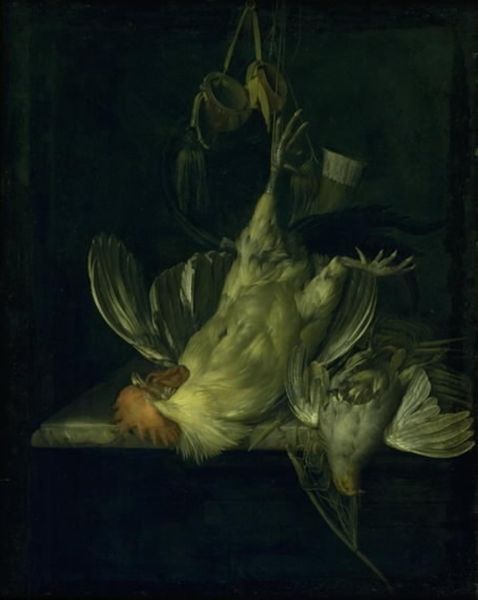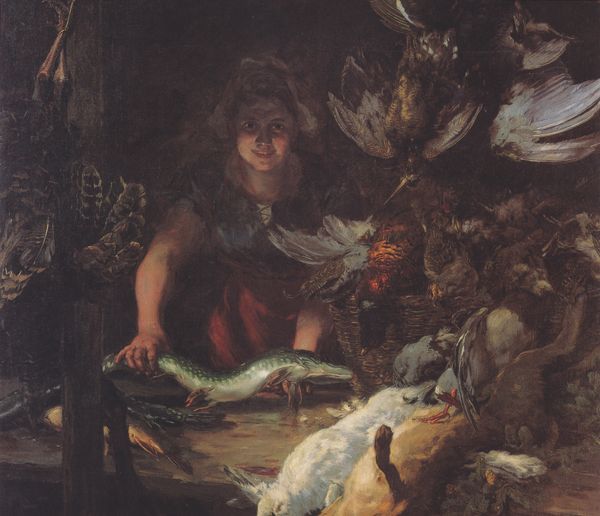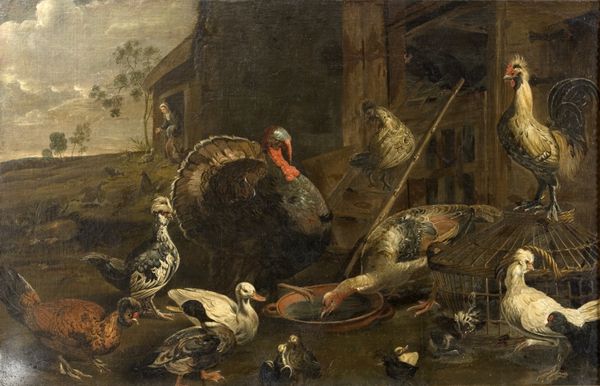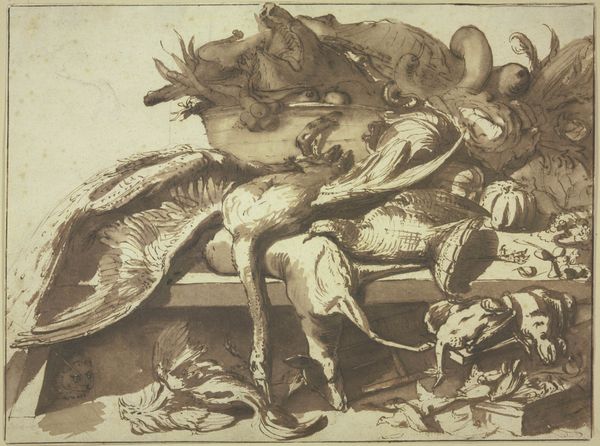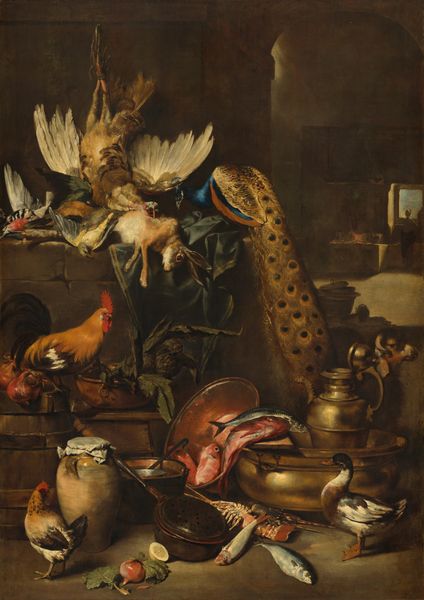
oil-paint, canvas
#
baroque
#
dutch-golden-age
#
oil-paint
#
oil painting
#
canvas
#
genre-painting
Dimensions: 72 cm (height) x 96.3 cm (width) (Netto)
Curator: So, here we have "Still Life with Fish on a Stone Table," believed to be painted by Abraham van Beijeren sometime between 1635 and 1690. It's currently held in the collection of the SMK, the Statens Museum for Kunst. What are your initial thoughts? Editor: My first thought is—it's a bit...gruesome. I mean, technically brilliant, but the dead eyes of those fish, the raw slice of salmon—it feels less like a celebration of bounty and more like a cautionary tale. Is it just me getting a memento mori vibe? Curator: It is difficult to separate those two things out, the presentation of food as a display of plenty and the ever-present understanding of mortality, of nature's cyclical patterns. I think what's really compelling here is the artist's almost scientific dedication to rendering texture and light. Look at the scales, each catching light in its own unique way, or the wet, almost slimy sheen on the skate. It speaks to a very acute observation of the natural world. Editor: Absolutely. And there’s that single crab leg jutting out, a sort of 'peek-a-boo' of decay, suggesting nothing lasts, all food disappears after a certain moment. What strikes me too, is the arrangement itself, kind of precariously piled. Deliberately unstable? Curator: Perhaps, a deliberate demonstration of painterly virtuosity! To masterfully depict something about to tumble creates an interesting dynamic. It plays with the genre expectations a bit. Still lifes of this era tend to convey an idea of stable, ordered prosperity. But here the precarious nature makes for interesting contemplation of transience. Editor: And that darkness! It is like a velvet curtain about to be drawn, just waiting for the fishmonger to leave his shop...Van Beijeren seems to use shadow almost as another character. He might be the true lead in the arrangement. Curator: The chiaroscuro is quite intense; it heightens the realism and the drama. Focusing on just the color, one could make a fairly direct link to developments in the broader Baroque period—using light and shadow to direct the viewer's gaze. Van Beijeren’s manipulation draws you into the scene. Editor: Right. The Dutch Golden Age. But golden for whom, right? Those contrasts! And while all this analysis helps... I keep coming back to those fish eyes! They're haunting. Maybe this painting isn't about skill so much as confronting our own fleeting existence? Curator: I agree, in the end the still life as a genre lends itself to multiple interpretations precisely because of the tensions between presentation and representation. It provides fertile ground for reflection. Editor: Okay, good. I'm glad the fish eyes weren't just talking to me.
Comments
No comments
Be the first to comment and join the conversation on the ultimate creative platform.


